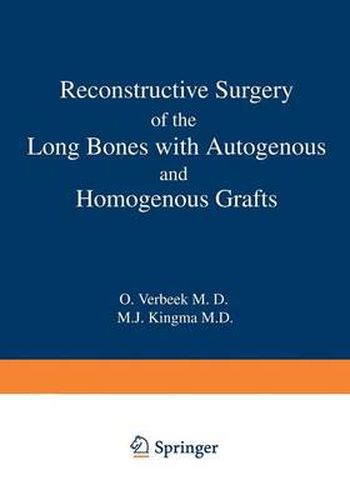Readings Newsletter
Become a Readings Member to make your shopping experience even easier.
Sign in or sign up for free!
You’re not far away from qualifying for FREE standard shipping within Australia
You’ve qualified for FREE standard shipping within Australia
The cart is loading…






This title is printed to order. This book may have been self-published. If so, we cannot guarantee the quality of the content. In the main most books will have gone through the editing process however some may not. We therefore suggest that you be aware of this before ordering this book. If in doubt check either the author or publisher’s details as we are unable to accept any returns unless they are faulty. Please contact us if you have any questions.
After my appointment as head of the Orthopaedic Department in the Surgical Clinic of the Wilhel- mina Gasthuis in Amsterdam, January 1953, I have had the privilege of a close and daily co-operation with my second-incharge M. J. Kingma. Amongst other problems, reconstructive surgery with the aid of bone-grafting captured the interest of both of us. In vol. XII, fasc. 3 (1960) of the Archivum of calf bone preserved by refrigeration was Chirurgicum Neerlandicum Kingma wrote: ‘The use introduced into surgery in the Netherlands by Meiss in 1951. After the appearance of Meiss’ reports on his favourable results, many other surgeons wished to employ this method and in order to cope with the numerous requests for material, a national bone transplantation service for calf bone was in- stituted in 1952 under the patronage of the Netherlands Red Cross with Kingma as its medical direc- tor’. In 1953 we considered homogenous graft to provide a better ‘biological intermedium’ than calf bone graft. Consequently we developed a bone-bank for homogenous grafts in our department from that date. After 18 years of experience we have been able to demonstrate clinically and radiologically that in some cases a ‘biological fixation’ can be maintained with the homogenous graft during the recon- struction by ‘graduated’ function. Kingma controlled the results and arranged the data.
$9.00 standard shipping within Australia
FREE standard shipping within Australia for orders over $100.00
Express & International shipping calculated at checkout
This title is printed to order. This book may have been self-published. If so, we cannot guarantee the quality of the content. In the main most books will have gone through the editing process however some may not. We therefore suggest that you be aware of this before ordering this book. If in doubt check either the author or publisher’s details as we are unable to accept any returns unless they are faulty. Please contact us if you have any questions.
After my appointment as head of the Orthopaedic Department in the Surgical Clinic of the Wilhel- mina Gasthuis in Amsterdam, January 1953, I have had the privilege of a close and daily co-operation with my second-incharge M. J. Kingma. Amongst other problems, reconstructive surgery with the aid of bone-grafting captured the interest of both of us. In vol. XII, fasc. 3 (1960) of the Archivum of calf bone preserved by refrigeration was Chirurgicum Neerlandicum Kingma wrote: ‘The use introduced into surgery in the Netherlands by Meiss in 1951. After the appearance of Meiss’ reports on his favourable results, many other surgeons wished to employ this method and in order to cope with the numerous requests for material, a national bone transplantation service for calf bone was in- stituted in 1952 under the patronage of the Netherlands Red Cross with Kingma as its medical direc- tor’. In 1953 we considered homogenous graft to provide a better ‘biological intermedium’ than calf bone graft. Consequently we developed a bone-bank for homogenous grafts in our department from that date. After 18 years of experience we have been able to demonstrate clinically and radiologically that in some cases a ‘biological fixation’ can be maintained with the homogenous graft during the recon- struction by ‘graduated’ function. Kingma controlled the results and arranged the data.